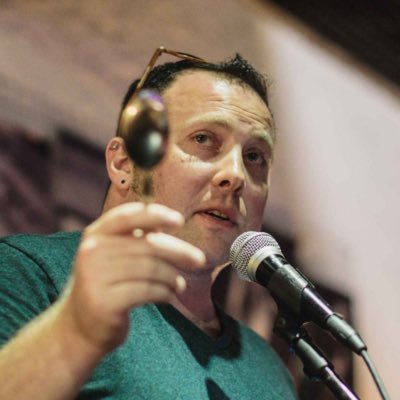Bridging The Loneliness Gap

Alex Hillman
It seems like every day, we’re hearing from friends, colleagues, and other community organizers who are navigating major life transitions. Career shifts, relocations (some by choice, some not), separations, marriages, new living situations.
And that’s all against the backdrop of a world where it seems like every day has its own scheduled chaos. While all of these experiences have unique elements, one thing they have in common is how lonely it feels while you’re going through it.
Something we don’t talk about much is how Indy Hall gives us a unique lens on these kinds of experiences. In the last 2 weeks alone, we’ve seen a very visible uptick in members actively choosing to increase their time in the Indy Hall community, and in person and online.
And I’ll be honest: it makes Adam and I very proud that after all these years Indy Hall continues to be a community that people seek out in times like these.
Last week, Adam sent me an Atlantic article titled “The Anti Social Century” about people choosing isolation, and why today’s world actively encourages it. We don’t necessarily agree with everything in the piece, but two things stood out that felt connected to the experiences I was just describing.
Why “feeling” the Loneliness Gap is different
First, we like how the author defined loneliness as “the gap between wanting to be around people and actually having it.” This reminded me of an analogy that I’ve used for a long time, but hadn’t written down or shared anywhere. So today I want to share it with you.
When stacked up to other common feelings, that “Loneliness Gap” is a distinctly weird sensation. My favorite comparison is the sensation of hunger.
Most of the time, when we’re hungry, we recognize that sensation before it becomes a problem (and definitely long before it becomes an existential problem). And when we do recognize that sensation we know how to solve it. We go to the fridge or pantry. We go grocery shopping. We walk to the corner store or cafe. We order takeout… notably isolating compared to a social dining experience, innit.
(And I have to acknowledge that everything here assumes you have the necessary access and resources, which not everyone has. But I’ll come back to that in a moment.)
By contrast to hunger, loneliness is a sensation that typically lingers in the background for a LONG time before we’re actively aware of it, let alone ready to do something about it.
Most often, we don’t even recognize it as loneliness. Loneliness is more often a root cause of other common sensations we are consciously aware of, things like “I don’t feel creative” or “I don’t feel like my work/effort is any good” or “I’m not very confident in my decisions” among many, many others.
And whether it’s because the feeling is more hidden beneath the surface, or simply because we’re less “attuned” to loneliness than we are to feeling hungry, what do we do once we DO realize we want to be around other people?
Closing the loneliness gap isn’t nearly as easy or convenient as going to the refrigerator or grocery store or ordering take out. Even if you know “where” to go, just showing up only goes so far. Really, you have to interact. And if you’ve gotten out of practice, talking to strangers (or even friends!) can feel more overwhelming than the low simmering discomfort of isolation.
The Loss of truly “Social” Media
The second point from “The Anti Social Century” that connected for us is how the entropy and fragmentation of social media and online communities into apps and infinite-scrolling feeds exacerbates these problems.
As someone who grew up in online communities, and who pioneered online communities being a key part of the coworking experience, the last few years have been really hard to reconcile. It’s hard to feel like I have a “place” on the public internet anymore, and I know I’m not alone in that feeling.
But the quarantine era of 2020/21 made it the easiest or only option for connection. Combine that with the way social media is designed for addiction instead of the connection they purport to create, it’s no surprise that our brains have been trained to reach for our phones to scroll TikTok or Instagram when we feel lonely.
And look, I have built real relationships and felt a sense of community on TikTok. Not judging it or saying it’s impossible. But kinda like eating junk food when you’re bored, scrolling social media when you’re lonely might satisfy the initial craving but probably lacks the real nourishment your body is telling you it needs.
Put it all together – the perpetual global chaos, the pandemic isolation habits, and social media being “easy but less healthy”– it’s easy to see how so many people are ignoring their own loneliness until it’s unbearable.
But there’s a glimmer of hope.
Back to the beginning of this essay, we’ve seen more and more people hitting that breaking point where they recognize that nothing will get better as long as they remain isolated.
Maybe you’re connecting the dots on your own, and realizing that it’s time to seek out places where community is happening before it becomes an existential crisis.
And my biggest hope is that if any of these ideas feel resonant, that you know you’re FAR from alone in feeling them.
Like with most things, the hardest part is usually getting started. If you’re already an Indy Hall member, talk to me, Adam, or other members so we can help you find ways to feel anchored and connected.
If you’re a fellow community leader, feel free to forward this message to them. I’ve also recorded an early version of these thoughts in a video if you’d like to share that instead!
And if you don’t know where to go, consider making Indy Hall part of your routine. Now might be the most important time to build or rebuild the habits that keep you out of The Loneliness Gap.
Take care of yourselves, each other, and the places you share.
We’re here to help.
Don't miss our next post
Stories, insights, and community updates delivered to your inbox weekly.
